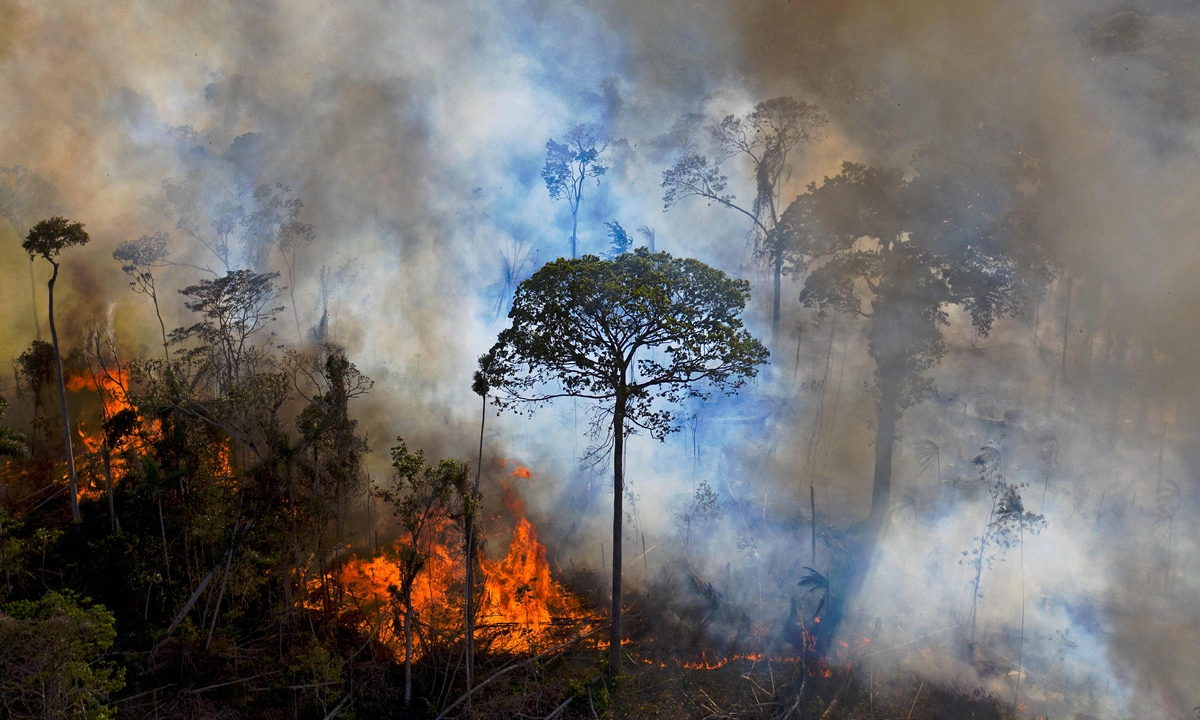
A large amount of smoke from the illegal burning of the Amazon rainforest in Nova Progresso, Para, Brazil on August 15, 2020 Photo: VCG
Unprecedented mapping of habitats in the Amazon basin shows a majority of species threatened with extinction suffered habitat loss due to fires over the last two decades, a study said on Wednesday.
Researchers used remote forest fire sensing data to model impact over time and compared the devastation with the estimated geographic ranges of over 11,500 plant and 3,000 vertebrate species.
The results showed that about 150,000 square kilometers of the Amazon rainforest have experienced fires since 2001, damaging the habitats of up to 85 percent of the delicate ecosystem's numerous threatened species.
Looking at fire trends and taking into account drought, the scientists uncovered an unmistakable link with human activity, especially deforestation.
"We found that the fires and their impacts are correlated with forest policy regimes in the region," Xiao Feng, author of the study published in Nature, told AFP.
In Brazil, where most of the Amazon basin is located, policies to reduce deforestation were put in place in the mid 2000s.
But president Jair Bolsonaro has pushed to open protected forests to agribusiness and mining, presiding over a surge in deforestation since taking office in January 2019.
"The impact [of fires] was lower during 2009-18, but we observe an uptick in 2019, which coincided with the relaxation of the forest policies in the region," Feng said.
Fire-impacted areas were estimated to be 20-28 percent higher than expected, affecting the habitats of over 12,000 plant and animal species.
To show the impact of fires on Amazon biodiversity, Feng and his team used a vast plant species database, as well as expert maps of animal habitats from the IUCN.
Based on conservative estimates of the geographic ranges for each species, Feng and his team built up what they described as "the largest and highest-resolution data set of range maps that currently exists for the Amazon basin."
Overlaying these maps with fire-impacted forest zones based on satellite data produced a grim picture for the region's biodiversity.
"I hope people care about this not because of a few species that people love or care about," he said.
"Rather that the fires and deforestation have been and are still impacting the great Amazon biodiversity, nonstop."
AFP
